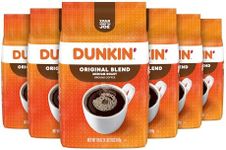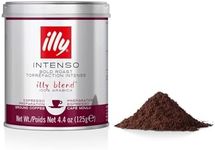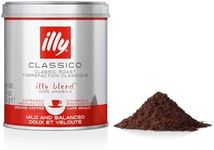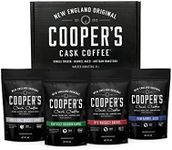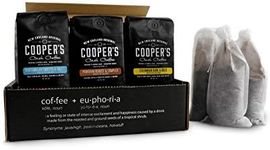Buying Guide for the Best Ground Coffees
Choosing the right ground coffee can significantly enhance your coffee-drinking experience. The key to finding the best fit for you lies in understanding your personal preferences and how different coffee characteristics align with them. Here are some important specifications to consider when selecting ground coffee, along with explanations to help you make an informed decision.Roast LevelRoast level refers to the degree to which coffee beans have been roasted, and it greatly affects the flavor profile of the coffee. There are three main roast levels: light, medium, and dark. Light roasts are known for their bright, acidic flavors and are often preferred by those who enjoy a more delicate and nuanced cup. Medium roasts offer a balance of acidity and body, making them a versatile choice for many coffee drinkers. Dark roasts have a bold, robust flavor with lower acidity, ideal for those who prefer a strong, rich taste. To pick the right roast level, consider your taste preferences and how you like your coffee to taste.
OriginThe origin of the coffee beans refers to the geographical location where they were grown. Different regions produce beans with distinct flavor profiles due to variations in climate, soil, and altitude. For example, African coffees are often fruity and floral, while South American coffees tend to be nutty and chocolatey. Asian coffees can have earthy and spicy notes. Understanding the flavor characteristics associated with different origins can help you choose a coffee that matches your taste preferences. If you enjoy exploring diverse flavors, you might want to try coffees from various regions.
Grind SizeGrind size refers to the coarseness or fineness of the ground coffee, which affects the extraction process during brewing. Common grind sizes include coarse, medium, and fine. Coarse grinds are suitable for methods like French press and cold brew, where longer extraction times are needed. Medium grinds work well for drip coffee makers and pour-over methods, providing a balanced extraction. Fine grinds are ideal for espresso machines, where quick extraction is required. To choose the right grind size, consider your preferred brewing method and ensure the grind size matches it for optimal flavor extraction.
Flavor NotesFlavor notes describe the specific tastes and aromas present in the coffee, such as fruity, nutty, chocolatey, or floral. These notes are influenced by factors like the coffee's origin, roast level, and processing method. Understanding flavor notes can help you identify coffees that align with your taste preferences. If you enjoy a particular flavor profile, look for coffees that highlight those notes. For example, if you like fruity flavors, you might prefer coffees with berry or citrus notes. Experimenting with different flavor profiles can also be a fun way to discover new favorites.
FreshnessFreshness refers to how recently the coffee was roasted and ground. Freshly roasted and ground coffee tends to have more vibrant flavors and aromas compared to older coffee. To ensure freshness, look for coffee with a roast date on the packaging and choose one that was roasted as recently as possible. Additionally, consider buying whole beans and grinding them just before brewing to maximize freshness. If you prefer the convenience of pre-ground coffee, try to consume it within a few weeks of opening to maintain its quality.
